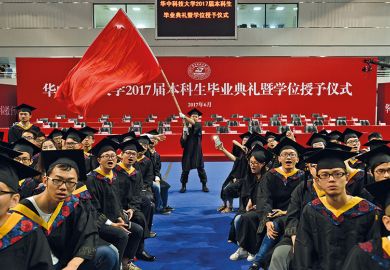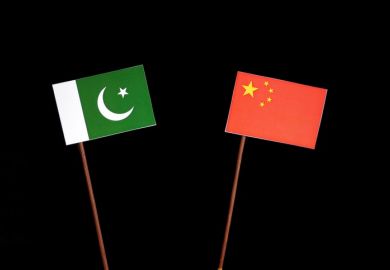The Belt and Road Initiative is enormous in its ambitions to link China more efficiently to other markets and nations through massive investment in land and maritime trading routes.
The land-based pathways across Asia and Europe reduce China’s dependence on sea transportation for its exports and for its energy and mineral imports. They are also aimed at deepening its relationships with the 60-plus nations along the routes in five areas: infrastructure, finance, policy, people-to-people exchanges and trade.
The official plan refers to greater student mobility, jointly run schools and 10,000 student scholarships. But little has yet been invested in people-to-people exchanges or human capital development; most of the action has focused on infrastructure, particularly roads, ports and railways.
One exception is the creation of two university alliances that aim to increase cooperation between Chinese universities and the 100-plus institutions along the trading routes. The other exception is the opening of international branch campuses by Chinese universities, such as Xiamen University’s new Malaysian campus.
The dominance of infrastructure investments parallels the early years of the Marshall Plan in post-war Europe. US financial aid relieved food and oil shortages, rebuilt automobile plants and housing and revitalised manufacturing across the Continent. It facilitated trade and fostered closer economic integration. But to maximise the impact of the new infrastructure, the plan also funded technical assistance and study tours to observe industrial practices, and sent US engineers to advise the emerging enterprises and guide technological transfers.
The Marshall Plan was administered by the Organisation for European Economic Co-operation (OEEC), which spawned the Organisation for Economic Cooperation and Development (OECD). This pursued a much wider agenda of cross-border collaboration between governments on common problems of economic and social development. In the 1960s, its activities expanded to include educational research and innovation, and it now leads a major cross-national survey of student performance. Its architects learned that complementary investments in local capacity, skills and know-how were needed to maximise the benefits of infrastructure projects.
The World Bank’s lending profile followed a similar trajectory. Created to help war-torn nations rebuild, the main focus of its first 35 years was on infrastructure, including massive hydroelectric schemes and railways. It made its first loan for education in 1963, with an emphasis on the vocational.
But in the 1970s, prompted by advocates of human capital theory, the bank made significant investments in large projects to provide primary and initial secondary school places to millions of children. The focus was on construction, but by the mid-1990s the bank supported investments in other educational necessities, such as books, and paid particular attention to improving the access of girls to basic education. In the late 1990s, the bank placed education centrally in a Comprehensive Development Framework, acknowledging both that local talent was needed to maximise the benefit of infrastructure and that diversifying economies and strengthening societies depended on an educated populace and a strong tertiary education sector.
All this suggests that to maximise success, the Belt and Road Initiative needs to recalibrate some of its investment priorities. There is little point in upgrading and automating a port facility if there is no one available to deal with logistics, inventory management, scheduling and security. Without skilled personnel, the facility is unlikely to be sufficiently profitable to service the debt burden. The prudent borrower will not wish to rely on the lender for its operation and maintenance: this can create a long-term and costly dependency relationship, reducing the sovereign nation’s control over its essential infrastructure.
One step would be a Silk Road Research Fund to augment the panoply of bilateral and multilateral mechanisms already in place. It could competitively fund work on shared environmental and social problems, as well as studies of the rich cultural and linguistic heritage of the Silk routes, land and sea. A Belt and Road Scholars programme could parallel the Fulbright Program, and some joint projects in vocational education could increase the supply of skilled technicians.
Historically informed initiatives such as this would allow the Belt and Road initiative to bring greater benefit more swiftly.
Alan Ruby is a senior scholar at the Alliance for Higher Education and Democracy at the University of Pennsylvania. Aisi Li is an assistant professor of education at Nazarbayev University, Kazakhstan.
POSTSCRIPT:
Print headline: The road China must travel
Register to continue
Why register?
- Registration is free and only takes a moment
- Once registered, you can read 3 articles a month
- Sign up for our newsletter
Subscribe
Or subscribe for unlimited access to:
- Unlimited access to news, views, insights & reviews
- Digital editions
- Digital access to THE’s university and college rankings analysis
Already registered or a current subscriber?







